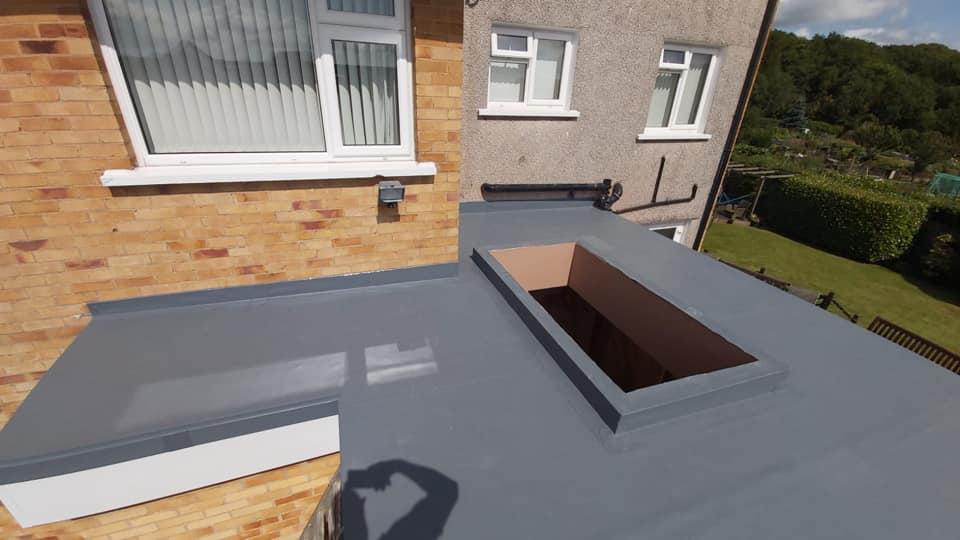Whether you’ve sought out a dubious professional or you’re trying it out yourself, there are a lot of mistakes somebody can make when installing a flat roof. It’s a different process than your typical roof, with a different end result, and that comes with a lot of new considerations that anybody should have in mind before they begin the roofing job.
It’s important to avoid these mistakes as they won’t just cost you even more money in the long run, they can also cause lasting structural damage to the building as a whole (and all the furniture in it!) and they may even pose a risk to people inside, such as in the case of roof collapse.
Needless to say, if you’re not confident in your DIY skills or your current roofer, you should shop around the local area to find workmen near you that deliver quality results while remaining competitively priced.
With that out of the way, let’s get into some of the most common mistakes a lot of people make when they try to install and maintain flat roofs.
1: Typical Installation Issues
The surest way to botch any construction project is with poor workmanship. A poor installation of the roof can include anything from subpar caulking, inadequate flashing placement, or any other physical problems where a part of the roof has been laid incorrectly, causing a structural weakness in the roof as a whole.
If you suspect that you have a roof that has been installed with mistakes present, you can have roofing professionals inspect and diagnose any issues. Catching these issues early can stop them from snowballing into larger problems.
2: Poor Drainage
This is a concern that becomes even more important for flat roofs. While sloped roofs will easily shift any rainfall that hits them, flat roofs pose a risk in the form of puddling and water build-up. This can be dangerous, which is why flat roofs often require spouts so that water can be drained away from the top to stop leaks. Regular attention is needed to keep an eye on the roof and make sure that water isn’t accumulating on it, or there isn’t anything blocking the waterspouts.
3: Poor Climate Control
You need to take the location of the building into account before you install any roof, especially a flat one. Some areas are more humid than others, and temperature differences will change how the roof acts when it comes into contact with the weather. All weather will need to be considered, too. There’s no use in a roof that doesn’t protect the building all year round.
Roof coatings are used to strengthen roofs against heat, cold, rain, snow, and sometimes even more extreme weathers than that. You not only have to remember to choose and maintain a roof coating for your flat roof, you need to choose the right one. There are a lot of different coatings that are better suited for different protection, so it’s best to get the advice of a contractor if you’re unsure.
Along with this, you also should take any snow or ice off the flat roof during winter periods. On sloped roofs, snow and ice will dissipate easier, but on flat roofs there’s a risk of ponding. This puts undue pressure on the roof and can create leaks.
4: Poor Ventilation
Another common mistake that people make when working with flat roofs is the required ventilation. Without proper ventilation, moisture can build up on the roof. If this moisture gets out of control, you can expect mould and material decay to ruin your flat roof. If your flat roof has been fitted with a ventilator, you’ll need to check this regularly so that you don’t miss a possible malfunction and end up with a mould problem.
5: Poor Substrate Preparation
When preparing a substrate for your flat roof, you want a material that’s durable, can withstand the environmental punishments of the building’s location, and will have a longer life expectancy. This varies between materials but what’s important is that once you’ve settled on your substrate, you check for bubbles or cracks developing in the roof. Alligatoring, where the top of your roof becomes knobby so that it looks like the skin of an alligator, is a common sign of poor substrate choice.
6: Flashing Problems
This is something to watch out for if your flat roof is made using asphalt or another material that’s known to expand and change with the temperature. As your roof expands and contracts over a long period of time, the flashing is pushed and pulled until it doesn’t properly cover the whole building, letting moisture in and potentially causing leaks.
The best way to avoid this is to ensure that the flashing is properly secured in the first place and then, as time goes by with your flat roof, periodically check to see if any of the flashing has been displaced by gradual contractions. Without flashing maintenance, they can cost you the whole roof.
7: Incomplete Repairs
This is a mistake that happens after the roof has been laid but it’s still worth mentioning, as this can turn a good flat roof into a poor one. Incomplete repair is where an issue with the roof may present itself and, instead of fully solving the problem, it’s covered over with a superficial fix. This patchwork approach to roof repair isn’t good in the long run and should be discouraged. If you’re doing DIY, try to get to the root of the problem. If it requires a professional contractor, get in touch with a service that can help you.
8: Overspending
This last one especially applies to lone DIY enthusiasts and, while it’s less related to roofing and how they are installed, it’s common for homeowners to buy more materials than they need. By doing this, homeowners actually end up creating waste since they don’t use those extra materials. Not only that, but the money that they spend on the extra materials is also unnecessary and would have been better spent on other things.
Avoiding Mistakes
Many of the mistakes mentioned in this article are avoidable. However, to minimise the chance of them happening in the first place, we advise you use trusted professionals, such as SureSeal, to carry out flat roofing related jobs. Especially more advanced and complicated ones.
If you have experienced any of these mistakes and they need rectifying, call us today on 01302 302 825 and we can carry out an inspection.



